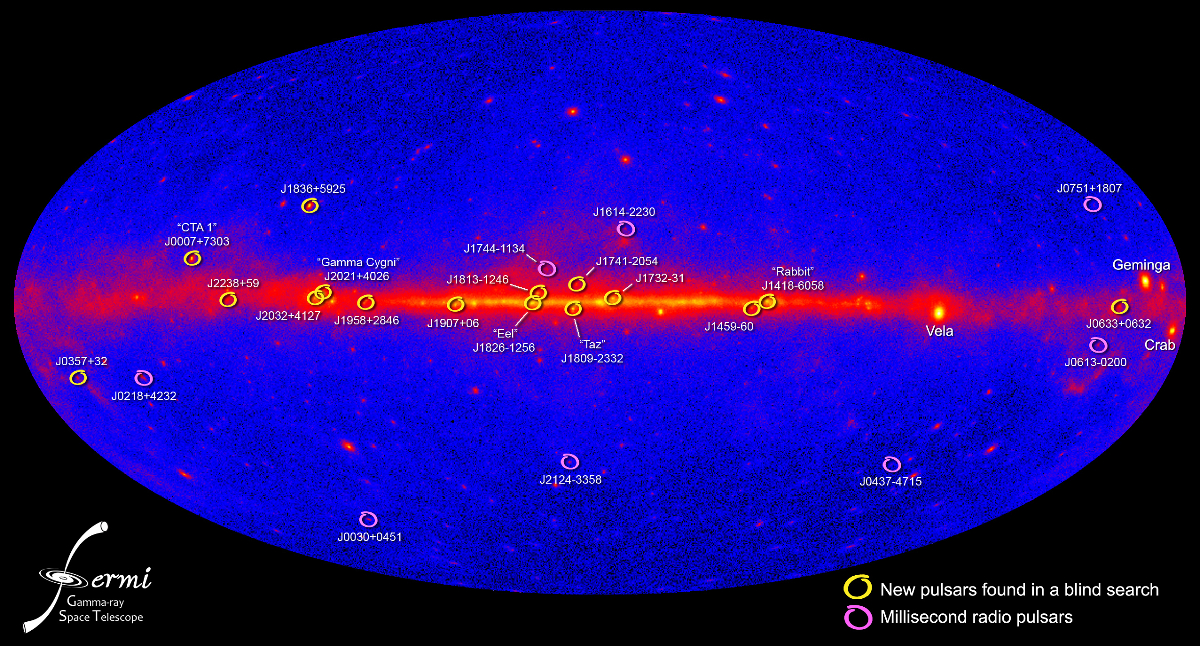
 Credit: NASA/DOE/Fermi LAT Collaboration
Credit: NASA/DOE/Fermi LAT Collaboration
Blind Pulsars
When a massive star dies, it often leaves behind a tiny, extremely dense cinder called a neutron star. Neutron stars are produced by the collapse of the star's core, producing a supernova explosion, and are born with strong magnetic fields and rapid spins. The strong magnetic fields and rapid spin produce beams of radiation which sweep through space. Astronomers have discovered about 1,800 such pulsars through their periodic radio emission. But pulsars emit a broad range of radiation from radio waves up through extremely high energy gamma rays. The Fermi Gamma-Ray Space Telescope, launched about 1 year ago, is the first gamma-ray observatory powerful enough to discover pulsars from their gamma-ray emission alone. The image above shows the Fermi all-sky map from Fermi's Large Area Telescope (LAT), along with the locations of gamma-ray pulsars detected by Fermi. Some of these have been already detected via their radio emission, but astoundingly Fermi has been able to detect 16 new gamma-ray pulsars (in only 5 months of observation) which have never before been identified. These pulsars were detected by astronomers using "blind" searches for periodic signals in the gamma-ray emission detected by the LAT. These LAT detections allow astronomers to better constrain the manner in which pulsars are formed and better understand how the pulsars interact with their environments.
Published: July 13, 2009
<
HEA Dictionary ● Archive
● Search HEAPOW
● Other Languages
● HEAPOW on Facebook
● Download all Images
● Education ● HEAD
>
Each week the HEASARC
brings you new, exciting and beautiful images from X-ray and Gamma ray
astronomy. Check back each week and be sure to check out the HEAPOW archive!
Page Author: Dr. Michael F. Corcoran
Last modified Monday, 26-Feb-2024 17:21:15 EST


